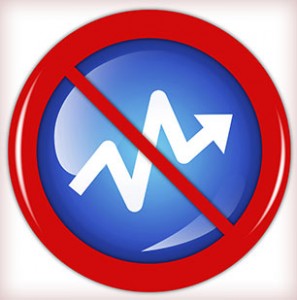Diabetes. Heart Disease. Obesity. These are three preventable conditions that millions of Americans are living with today. Is misinformation or lack of information the cause? Are they educated but lack motivation to take necessary precautions? Each day people make numerous decisions that have a tremendous impact on their overall health. As health industry marketers, our job is to give them the right information, support, and inspiration to help them make judicious decisions to live healthy lives and prevent chronic conditions, when possible.
According to the CDC, diabetes, heart disease, and obesity are among the top diseases that are the most preventable. “Diabetes is the leading cause of kidney failure, lower limb amputations (other than those caused by injury), and new cases of blindness among adults.” One would think these consequences could provide enough motivation to make healthy choices, yet millions of Americans continue to be diagnosed because they fail to take action. Unfortunately, the number of cases keeps rising year-after-year. Fortunately, we can break the cycle and reverse the trend.
Knowing the facts & their future
The American Academy of Family Physicians stated that patient education and filling prescriptions have about the same impact on health outcomes. Our responsibility is to provide the necessary information patients need to understand the impact of these conditions, steps to prevent them and the difficult future they may experience living with these conditions if precautions are not taken. Empowering patients to act now, by taking steps to wellness, starts with education. Pharmaceutical brand marketers, health content developers, and healthcare providers must work together to create expert disease prevention content. But what is the right time and method to make an impact? The encounter must be highly engaging personal experiences filled with emotion, and distributed through key platforms for easy access by patients.
Support through connections
After educating patients and instilling motivation, the next step is ensuring prolonged commitment to health. This can be accomplished by creating connections between people through online communities and social groups. In a recent Remedy Heath Media study, 7 in 10 people said they were motivated by others to take an action such as eating healthier, exercising regularly, and getting a routine physical. It’s pretty amazing how contagious good health decisions become when surrounded by other like-minded individuals. Plus, there is the opportunity to make new friends who will push you when you need it most.
Through online outlets, health experts such as Amy Hendel (The Health Gal) – physician assistant, nutritionist, and health coach – provide connections for people needing support with their weight-loss, nutrition and fitness goals. These experts give people a sense of belonging and that they are not alone – they have somebody to turn to for trustworthy insights, advice, and guidance – keeping them focused and on track.
Other connections can be made through health and wellness social groups, like the one my wife started last year by connecting with neighbors, exercising together and sharing healthy family eating habits, grocery shopping, fitness tips, and more. Not only did it build a community focused on health and wellness, it created a support system sustaining their commitment. When a member of our wellness group cannot attend meetings the group reaches out and rallies together to ensure they remain engaged. Yes, peer pressure is still alive and well… but for good reason.
Remarkable health heroes spark inspiration
We have found that people become empowered through emotional storytelling. Remedy’s research indicates that among respondents who were highly motivated by emotional storytelling, 90% felt inspired after hearing an emotionally charged personal story.
To spark motivation, sites such as BerkeleyWellness.com are developing emotional marketing programs including Be Well, Be Brave™, which captures the spirit of being brave by challenging themselves to lead a healthy life. Be Well, Be Brave™ presents emotional personal stories of everyday health heroes, who, despite huge hurdles, made important choices needed to live well. These stories depict the real-life transformations of people taking charge of their health. In turn, they inspire others to take action. The health hero’s story are chronicled in a long-form multi-media experience with video and text infused with expert supporting content – buying guides, diet and fitness plans – providing support, inspiration, and engagement for others to go above and beyond what they thought possible.
Whether it’s connecting online, through a social group, or via emotional storytelling, people need to spark their motivation to live healthier. That motivation comes from being educated, not just about where they are today, but what their future holds if changes aren’t made. Motivation will drive action and ultimately lead to a more healthy life, without the worry of preventable conditions. Remember, today the number of people being diagnosed with diabetes, heart disease, and obesity is climbing year-after-year; but by working together, our mission is to break this cycle, stop the trend, and reverse these growing numbers.